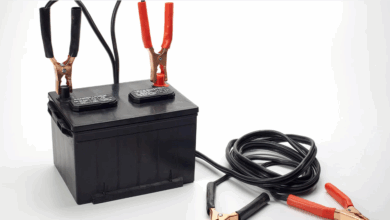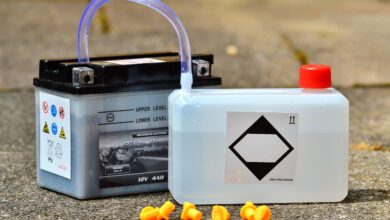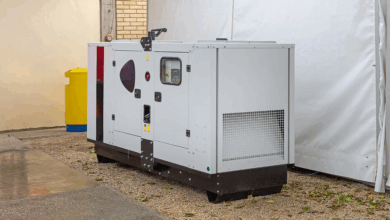Small Generator Maintenance: Tips to Keep it Running Smoothly
Powering Through: Essential Small Generator Maintenance Tips for Smooth Operation
In an unpredictable world, a small generator can be a lifeline. Whether powering essential appliances during an outage, running tools on a remote job site, or providing comfort at a campsite, these compact powerhouses offer invaluable convenience and security. However, like any engine, a small generator requires regular care to function reliably when you need it most. Neglecting maintenance can lead to frustrating breakdowns, reduced lifespan, and even safety hazards.
Think of your generator as a small, portable car engine. It has similar needs: clean fuel, fresh oil, good air flow, and a healthy ignition system. By following a simple, proactive maintenance schedule, you can ensure your generator starts reliably, runs efficiently, and lasts for years to come. This isn’t just about preventing breakdowns; it’s about ensuring you have power when you need it most, providing peace of mind during critical situations.
Here are essential tips to keep your small generator running smoothly:
1. Read and Understand Your Owner’s Manual:
This is the absolute first step. Every generator model is slightly different. The owner’s manual provides specific information on maintenance schedules, oil types and capacities, spark plug specifications, filter types, and troubleshooting for your specific unit. Keep it in a safe, accessible place and refer to it regularly.
2. Prioritize Fluid Management: Oil is Life!
The engine oil lubricates moving parts, reduces friction, cools the engine, and helps keep it clean. Dirty or low oil is a primary cause of generator failure.
- Check Oil Level Before Each Use: Just like checking the oil in your car, ensure the level is within the recommended range on the dipstick.
- Change Oil Regularly: The manual will specify the change interval based on operating hours (e.g., every 50 or 100 hours) or time (e.g., at least once a year, even if not used heavily). Initial oil changes (after the first few hours of use) are often recommended to remove break-in debris.
- Use the Correct Oil: Always use the type and weight of oil recommended in your owner’s manual (often SAE 30, 10W-30, or synthetic depending on temperature and model). Using the wrong oil can cause damage.
- Drain Oil When Warm: Changing the oil when the engine is slightly warm (not hot!) allows the oil to flow more easily and carry away more contaminants. Ensure you have an oil drain pan and rags ready.
3. Mind the Fuel: Quality and Freshness Matter
Fuel is the generator’s lifeblood, but it can cause significant problems if not managed correctly.
- Use Fresh Fuel: Gasoline degrades over time, especially with ethanol blends. Stale fuel can gum up the carburetor and fuel lines, leading to starting problems and poor performance. Use gasoline purchased recently (within 30-60 days for standard fuel).
- Consider Non-Ethanol Fuel: If available and recommended by your manual, non-ethanol gasoline is often preferred for small engines as ethanol can attract water and degrade rubber and plastic components in the fuel system.
- Use Fuel Stabilizer: If you won’t be using the generator for more than a month, add a quality fuel stabilizer to the tank before storing it. Run the engine for a few minutes after adding the stabilizer to ensure it circulates throughout the fuel system.
- Drain Fuel for Long-Term Storage: For storage longer than a few months (or as recommended by the manual), it’s often best to drain the fuel tank and run the engine until it runs out of fuel. This prevents stale fuel from clogging the carburetor. Be cautious when draining fuel – do it in a well-ventilated area away from ignition sources.
4. Air Filter Care: Let Your Engine Breathe
The air filter prevents dust and debris from entering the engine’s combustion chamber, where it can cause wear. A dirty air filter restricts airflow, reducing performance and potentially increasing fuel consumption.
- Check and Clean/Replace Regularly: Inspect the air filter frequently (e.g., every 25-50 hours or more often in dusty conditions).
- Foam Filters: These can often be washed in warm, soapy water, rinsed, dried thoroughly, and sometimes re-oiled (follow manual instructions).
- Paper Filters: These usually need to be replaced when dirty. Tapping them clean might remove some surface dust but doesn’t restore full airflow.
5. Spark Plug: The Ignition Key
The spark plug ignites the fuel/air mixture in the cylinder. A fouled, worn, or incorrectly gapped spark plug can cause misfires, hard starting, or failure to start.
- Inspect and Clean/Replace: Check the spark plug periodically (e.g., every 100 hours or annually). Look for deposits (fouling) or wear on the electrode.
- Clean Deposits: Light deposits can sometimes be cleaned with a wire brush.
- Check the Gap: Use a spark plug gap tool to ensure the gap between the electrodes matches the specification in your owner’s manual. Adjust if necessary.
- Replace When Worn or Fouled: If the plug is heavily fouled, cracked, or the electrode is worn, replace it with a new one of the correct type and heat range specified in your manual. Don’t overtighten new plugs.
6. Keep it Clean:
A clean generator isn’t just for aesthetics; it’s practical maintenance.
- Wipe Down After Use: Remove dirt, dust, and debris from the engine, frame, and fuel tank.
- Clear Vents: Ensure cooling fins and air intake vents are free from obstructions like leaves, grass, or dust bunnies. This prevents overheating.
- Check for Leaks: Cleaning makes it easier to spot oil or fuel leaks that indicate a potential problem.
7. Battery Maintenance (for electric start models):
Electric start generators rely on a battery.
- Check Terminals: Ensure battery terminals are clean and securely connected. Clean corroded terminals with a wire brush.
- Keep it Charged: If your generator has a battery, ensure it stays charged, especially during storage. Some generators have a small trickle charger port. A dead battery means no electric start.
8. Regular Exercise: Run Your Generator
One of the best things you can do is run your generator periodically, even when you don’t need it.
- How Often? At least once a month is a common recommendation.
- How Long? Run it for 15-30 minutes.
- With a Load? Yes, ideally. Connect a small load (like a few light bulbs or a small heater) to put the engine under a bit of stress. This helps circulate oil, keep seals lubricated, prevent carburetor clogs, and ensure everything is functioning correctly.
9. Safe Handling and Storage:
- Always Turn Off and Cool Down: Before performing any maintenance, ensure the generator is turned off, the engine has cooled completely, and for extra safety, disconnect the spark plug wire to prevent accidental starting.
- Fueling Safety: Refuel only when the engine is off and cool, in a well-ventilated area, away from open flames or sparks.
- Storage Location: Store your generator in a dry, level location, away from living areas, out of direct sunlight, and protected from the elements. Using a generator cover can help keep it clean.
By incorporating these simple maintenance steps into your routine, you significantly increase the likelihood that your small generator will fire up and perform reliably the moment you need it.
Small Generator Maintenance: FAQs
Here are some common questions generator owners ask:
Q1: How often should I change the oil in my small generator?
A: The most common recommendation is every 50 to 100 operating hours, or at least once a year, whichever comes first. Many manufacturers recommend an initial oil change after just the first 5-10 hours to clear out manufacturing debris. Always check your owner’s manual for the specific schedule for your model.
Q2: Can I use regular car oil in my generator?
A: It’s strongly recommended to use the type and weight of oil specified in your generator’s owner’s manual. Small engines often have different requirements than car engines. Using the wrong oil can lead to inadequate lubrication, premature wear, and potential engine damage. Common types are SAE 30 for warmer temperatures or 10W-30 for variable temperatures.
Q3: How long can I store fuel for my generator?
A: Without stabilizer, standard gasoline can start to degrade in as little as 30-60 days, especially if it contains ethanol. With a quality fuel stabilizer added according to product directions, you can typically store fuel for 6-12 months. For longer storage, it’s best to drain the fuel tank and carburetor completely.
Q4: My generator won’t start after being stored. What’s the most likely cause?
A: The most common culprit for starting issues after storage is stale fuel or a clogged carburetor caused by fuel degradation. Draining the old fuel, adding fresh fuel with stabilizer, and potentially cleaning the carburetor are often necessary steps. Other possibilities include a fouled spark plug, low oil level (due to safety shut-off), or a dead battery (on electric start models).
Q5: Why do I need to run my generator regularly (exercise it)?
A: Running the generator periodically (e.g., monthly for 15-30 minutes, ideally with a load) helps keep internal components lubricated, circulates fuel to prevent clogs in the carburetor, charges the battery (if applicable), and helps you identify any potential issues before an emergency arises. It’s crucial for long-term reliability.
Q6: When should I replace the spark plug?
A: Check your owner’s manual for the recommended replacement interval, often every 100-300 hours or annually. However, you should inspect it periodically and replace it sooner if you see heavy carbon fouling, significant wear on the electrode, or if the generator is experiencing starting problems or misfires that aren’t resolved by other maintenance.
Q7: Is it safe to perform generator maintenance myself?
A: Basic maintenance like checking/changing oil, checking/cleaning/replacing air filters, and inspecting/replacing spark plugs is generally safe for anyone comfortable working with small engines, provided you follow safety guidelines (generator off, cool, spark plug wire disconnected). For more complex issues or repairs, it’s best to consult a qualified service technician.
Conclusion
A small generator is a significant investment in preparedness and convenience. Just like any valuable tool, it requires consistent care to deliver peak performance and reliability over its lifespan. By making routine maintenance a priority – checking fluids, managing fuel quality, keeping filters and spark plugs in good shape, and simply running the unit periodically – you dramatically reduce the risk of frustrating breakdowns precisely when you need power the most.
While maintenance might seem like a chore, it’s a straightforward process that empowers you to be confident in your generator’s ability to perform its critical job. Consult your owner’s manual often, follow the recommended service intervals, and address minor issues before they become major problems. A well-maintained small generator isn’t just a machine; it’s a dependable source of power, offering security and peace of mind in an uncertain world. Invest a little time in its care, and it will be ready to serve you reliably for years to come.




![How to Bypass CO Sensor on Generator – [4-Step Safety Guide]](https://www.generator411.com/wp-content/uploads/2025/08/co-sensor-on-generator-390x220.png)